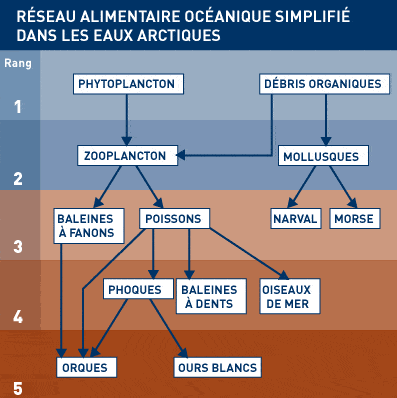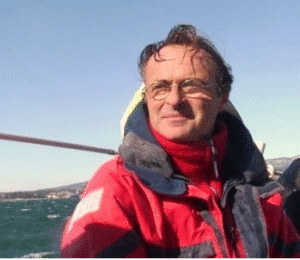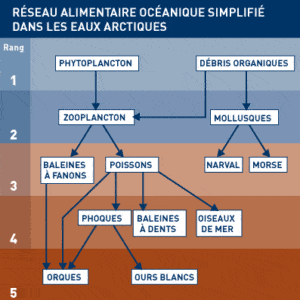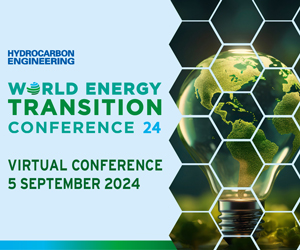The incredible complexity of marine food chains is often misunderstood, yet it is at the heart of the balance of our oceans. These complex networks, made up of a tangle of organisms ranging from tiny phytoplankton to the most gigantic predators, play a crucial role in maintaining the marine ecosystem. Each link, each interaction, is essential for balancing the masses of water that cover more than two-thirds of our planet. But what happens when one of these links disappears? The impacts are often disruptive, affecting not only marine diversity but also the health of the oceans, our climate, and by extension, global food security.
Table of Contents
ToggleThe fundamental role of primary producers in marine food chains
At the beginning of the marine food chain are the primary producers, mainly phytoplankton. These microscopic organisms capture energy from the sun through photosynthesis, producing a large part of the oxygen we breathe and serving as the main source of energy for higher trophic levels. Phytoplankton, often described as the “invisible forests of the ocean,” is essential for thousands of marine species.
Phytoplankton is composed of several types of organisms, including diatoms, dinoflagellates, and cyanobacteria. Each plays a specific role. Diatoms, for example, are enclosed in silica shells and are extremely efficient at photosynthesis. Dinoflagellates, known for their bioluminescence, can also trigger phenomena like red tides, which have significant ecological and economic impacts. Cyanobacteria, on the other hand, are among the oldest forms of life and are vital for nitrogen fixation, a crucial nutrient for marine life.
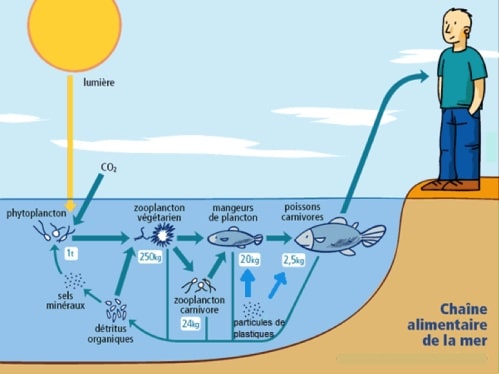
But phytoplankton does not work alone. It is accompanied by zooplankton, tiny animals that drift in ocean currents and primarily feed on phytoplankton. These organisms, ranging from small crustaceans like krill to larval stages of fish and mosquitoes, are essential for energy transfer throughout the food chain. Without this food base, marine trophic networks would collapse, affecting not only marine life but also human terrestrial populations that rely on these ecosystems for oxygen, food resources, and climate regulation.
By understanding the crucial role of primary producers, we realize why their protection is fundamental for the integrity of marine food chains. Threats such as nutrient pollution and climate warming that directly affect phytoplankton productivity can have devastating cascading effects on the entire ecosystem.
Impact of pollution and climate change on phytoplankton
Human activities cause various environmental changes that threaten these primary producers. Ocean acidification, for example, weakens calcium-based organisms and alters water chemistry, reducing the efficiency of phytoplankton’s photosynthesis. Furthermore, the warming of ocean waters changes the distribution of plankton in the seas, disrupting established ecological balances.
To counter this, initiatives such as those from phytoplancton-en-danger-pourquoi-est-il-si-important/”>Mer & Nature and Planète Océan focus on the research and conservation of phytoplankton. By monitoring pollution levels and studying the impact of temperature changes on these tiny marine plants, these organizations seek solutions to protect and support these foundations of our oceanic life.
The role of intermediate species: essential food bridges
If phytoplankton is the fundamental base of marine food chains, euphausiids and small fish like sardines, anchovies, and krill form the crucial intermediate level. These species play a dual role by feeding on plankton, which they transform into biomass accessible to larger predators. These prolific intermediates often gather in massive schools, a collective behavior that offers protection against predation while maximizing their role in energy transfer.
Consider sardines, for example. Rich in omega-3 fatty acids, they are not only essential for marine biodiversity but also for humans as a food source. Anchovies, primarily inhabiting coastal areas, feed on zooplankton and enhance the efficiency of energy transfer from phytoplankton biomass to higher trophic levels.
Krill, abundant in cold oceans like Antarctica, is a crucial component in the diet of many species, including whales and penguins. These tiny crustaceans are masters of filtering, consuming large amounts of phytoplankton to support their vast populations.
These intermediate species are essential for maintaining stable predator populations. However, their overexploitation for human consumption and the aquaculture sector can lead to imbalances, affecting the entire food chain. Entities like Nautilus and Biomarine advocate for sustainable resource management to preserve these key elements of our marine ecosystem.
Threats to intermediate levels
Overfishing remains one of the main threats to these intermediate players, with potentially disastrous consequences for the marine food chain. The decline of fish stocks such as mackerel, dedicated to human consumption and aquaculture, is concerning. The oceanic food chain largely relies on these small fish that feed the predators of higher levels.
| Species | Role in the ecosystem | Main threats |
|---|---|---|
| Krill | Food source for whales and penguins | Overfishing, climate change |
| Sardines | Human and animal food | Overfishing, pollution |
| Anchovies | Regulation of phytoplankton | Fishing pressure, pollution |
To tackle these issues, alliances like those promoted by ÉcoOcéan promote sustainable aquaculture, allowing for reduced fishing pressure and restoring a beneficial balance for marine biodiversity.
Top-level predators: regulators of the oceanic ecosystem
Top-level predators, such as tuna, sharks, and dolphins, play a vital role in maintaining the balance of marine ecosystems by regulating prey populations. These species are not only caught to ensure ecological stability, but they have also entered the collective imagination as symbols of marine power.
Tuna, in particular, is an agile hunter, capable of reaching speeds of over 60 kilometers per hour, making it a formidable predator for small forage fish. Sharks, with their electroreceptors and group hunting behavior, effectively prey on various species, from the smallest to the largest.

The dolphin, another marine mammal of remarkable intelligence, uses cooperative hunting techniques to catch fish and squid. These predators stimulate biodiversity by controlling prey populations and promoting balanced species distribution in the ecosystem. The disappearance of these ecological certainties would lead to a collapse of intermediate populations, causing a food and ecological imbalance.
Therefore, conservation efforts are essential for these species facing constant threats such as overfishing and marine pollution. Initiatives like Pêche Marin and Mers Vivantes aim to preserve these iconic predators through sustainable fishing policies and marine ecosystem regulation.
Adaptations and threats of apex predators
White sharks, orcas, and polar bears, while being emblematic examples of apex predators, are under severe pressure due to human overexploitation and rapid environmental changes. They possess a set of adaptations that make them formidable hunters, but their role in the ecosystem makes them vulnerable to imbalances.
Advances in marine technology, such as those promoted by Océanopolis, offer new perspectives for conservation and sustainable management of marine resources, ensuring that these critical predators continue to fulfill their vital role in the marine ecosystem.
The interdependence and resilience of the oceanic food network
Understanding the complexity of oceanic trophic networks is essential to assess the impact of human activities on marine ecosystems. Unlike a simple linear food chain, the oceanic trophic network is multidimensional and interconnected: one species often has several food roles that ensure dynamic interactions between different trophic levels.
This intertwining makes trophic networks more resilient but also more sensitive to disturbances. Overfishing, climate change, and pollution can have devastating consequences for these connections. Therefore, strategies such as those supported by Terre & Mer focus on sustainable ocean management to protect marine biodiversity.
Examples of ecological disruptions clearly show that the disappearance of one species, even a small one, can trigger a domino effect throughout the trophic network. In particular, the decline of krill due to climate warming affects not only its direct predators like whales but also reverses the trophic balance, leading to unpredictable ecological implications.
To respond to these threats, involving climate change and human utilization of marine resources, it is crucial to promote conservation practices that consider ecological interactions, ensuring that these magnificent ecosystems endure for future generations.

